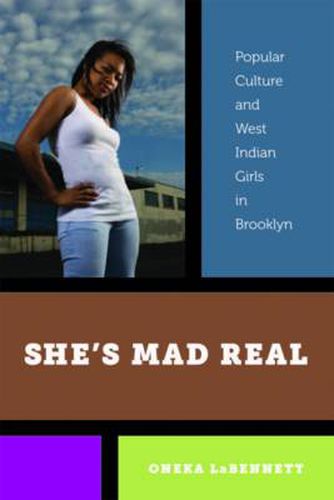Readings Newsletter
Become a Readings Member to make your shopping experience even easier.
Sign in or sign up for free!
You’re not far away from qualifying for FREE standard shipping within Australia
You’ve qualified for FREE standard shipping within Australia
The cart is loading…






Overwhelmingly, Black teenage girls are negatively represented in national and global popular discourses, either as being at risk for teenage pregnancy, obesity, or sexually transmitted diseases, or as helpless victims of inner city poverty and violence. Such popular representations are pervasive and often portray Black adolescents’ consumer and leisure culture as corruptive, uncivilized, and pathological. In She’s Mad Real, Oneka LaBennett draws on over a decade of researching teenage West Indian girls in the Flatbush and Crown Heights sections of Brooklyn to argue that Black youth are in fact strategic consumers of popular culture and through this consumption they assert far more agency in defining race, ethnicity, and gender than academic and popular discourses tend to acknowledge. Importantly, LaBennett also studies West Indian girls’ consumer and leisure culture within public spaces in order to analyze how teens like China are marginalized and policed as they attempt to carve out places for themselves within New York’s contested terrains.
$9.00 standard shipping within Australia
FREE standard shipping within Australia for orders over $100.00
Express & International shipping calculated at checkout
Overwhelmingly, Black teenage girls are negatively represented in national and global popular discourses, either as being at risk for teenage pregnancy, obesity, or sexually transmitted diseases, or as helpless victims of inner city poverty and violence. Such popular representations are pervasive and often portray Black adolescents’ consumer and leisure culture as corruptive, uncivilized, and pathological. In She’s Mad Real, Oneka LaBennett draws on over a decade of researching teenage West Indian girls in the Flatbush and Crown Heights sections of Brooklyn to argue that Black youth are in fact strategic consumers of popular culture and through this consumption they assert far more agency in defining race, ethnicity, and gender than academic and popular discourses tend to acknowledge. Importantly, LaBennett also studies West Indian girls’ consumer and leisure culture within public spaces in order to analyze how teens like China are marginalized and policed as they attempt to carve out places for themselves within New York’s contested terrains.